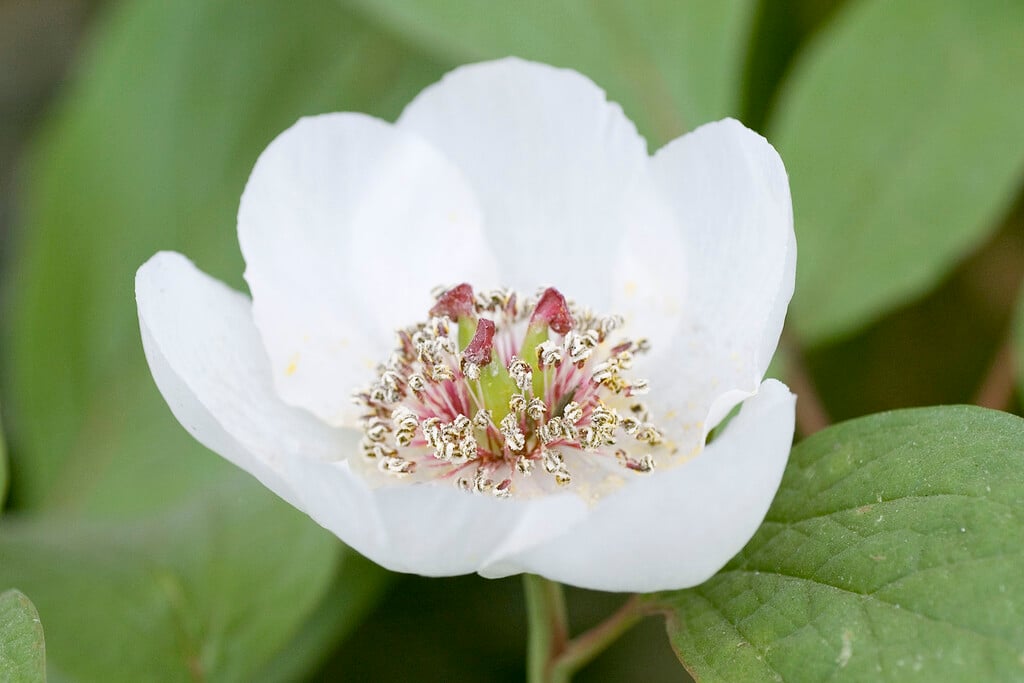Paeonia obovata
obovate peony
A compact, clump-forming perennial to around 60cm high, with foliage divided into large, slightly grey-green, oval to egg-shaped leaflets that are held in groups of three. Flowers from mid spring, producing cup-shaped, lightly scented single flowers with white or dark pink petals, which are followed by pods of glossy black seeds
Size
Ultimate height
0.5–1 metresTime to ultimate height
2–5 yearsUltimate spread
0.5–1 metresGrowing conditions
Moisture
Moist but well–drainedpH
Acid, Alkaline, NeutralColour & scent
| Stem | Flower | Foliage | Fruit | |
| Spring | White Pink | Green Grey Silver | ||
|---|---|---|---|---|
| Summer | Green Grey Silver | |||
| Autumn | Green Grey Silver | Black | ||
| Winter |
Position
- Full sun
- Partial shade
Aspect
East–facing or South–facing or West–facing
Exposure
Sheltered Hardiness
H6Botanical details
- Family
- Paeoniaceae
- Native to GB / Ireland
- No
- Foliage
- Deciduous
- Habit
- Bushy, Clump forming
- Potentially harmful
- Pets (dogs, cats): Skin irritant. For further information and contact numbers regarding pets, see the HTA guide to potentially harmful plants
- Genus
Paeonia may be herbaceous perennials or deciduous sub-shrubs with large, divided leaves and showy large bowl-shaped flowers, usually in early summer
- Name status
Correct
- Plant range
- Temperate Asia
How to grow
Cultivation
Grow in deep, rich, well-drained soil, ideally in full sun but will tolerate light shade. Will not tolerate waterlogging. See herbaceous peony cultivation for more detailed advice
Propagation
Propagate by seed or by division, lifting and dividing established clumps in autumn
Suggested planting locations and garden types
- City and courtyard gardens
- Cottage and informal garden
- Low Maintenance
- Flower borders and beds
Pruning
Cut back to ground level in autumn, to remove dead foliage and reduce the risk of disease
Pests
May be susceptible to leaf and bud eelworm and swift moth caterpillar
Diseases
May be susceptible to a virus, honey fungus, Verticillium wilt, peony leaf blotch and peony wilt
Get involved
The Royal Horticultural Society is the UK’s leading gardening charity. We aim to enrich everyone’s life through plants, and make the UK a greener and more beautiful place.
